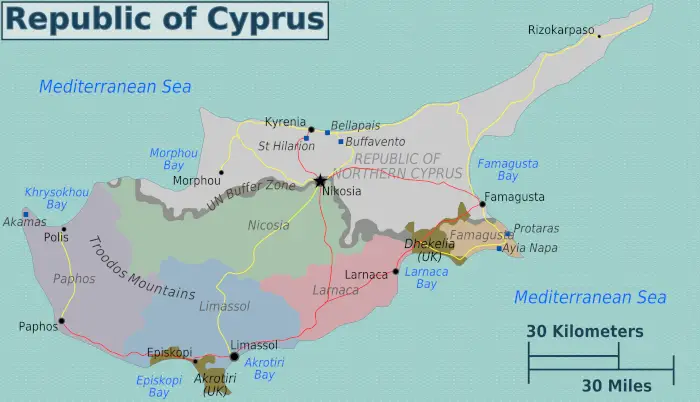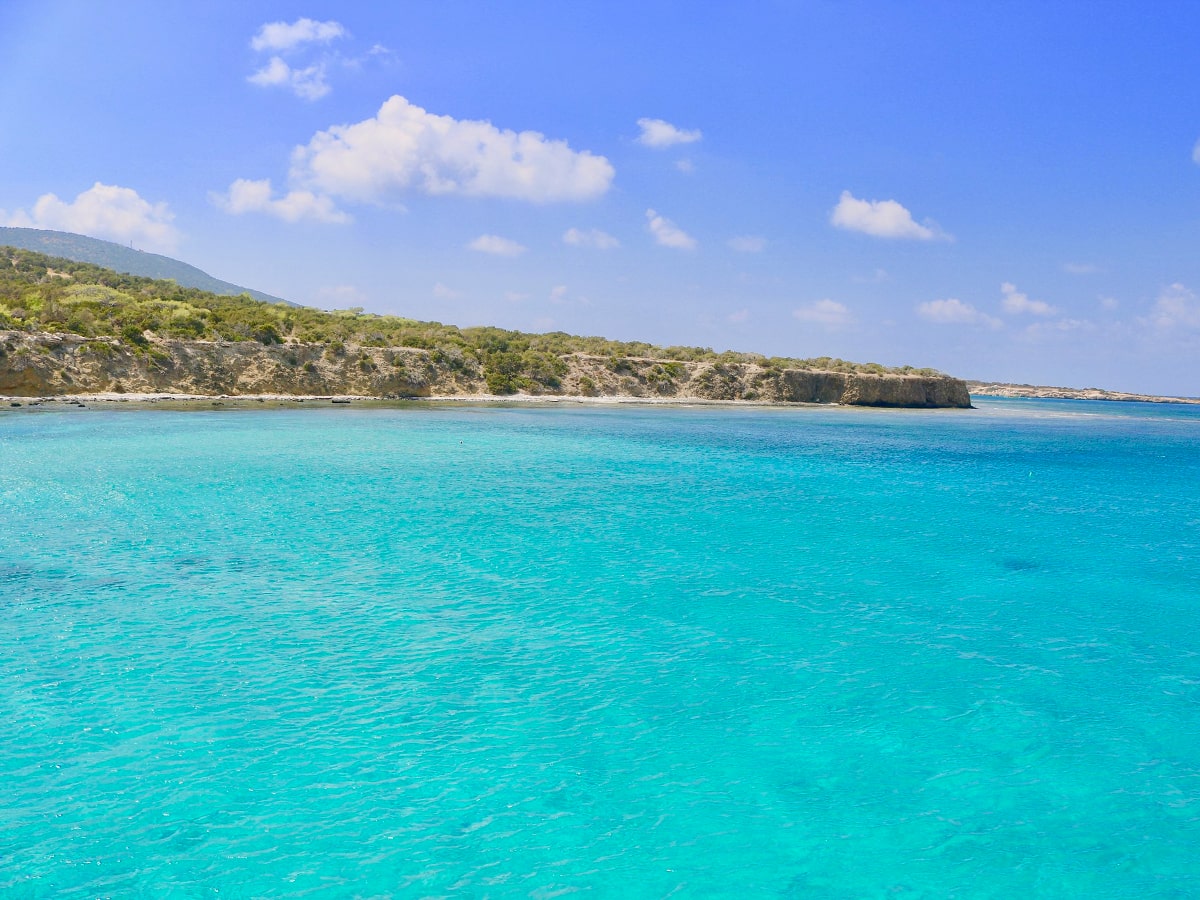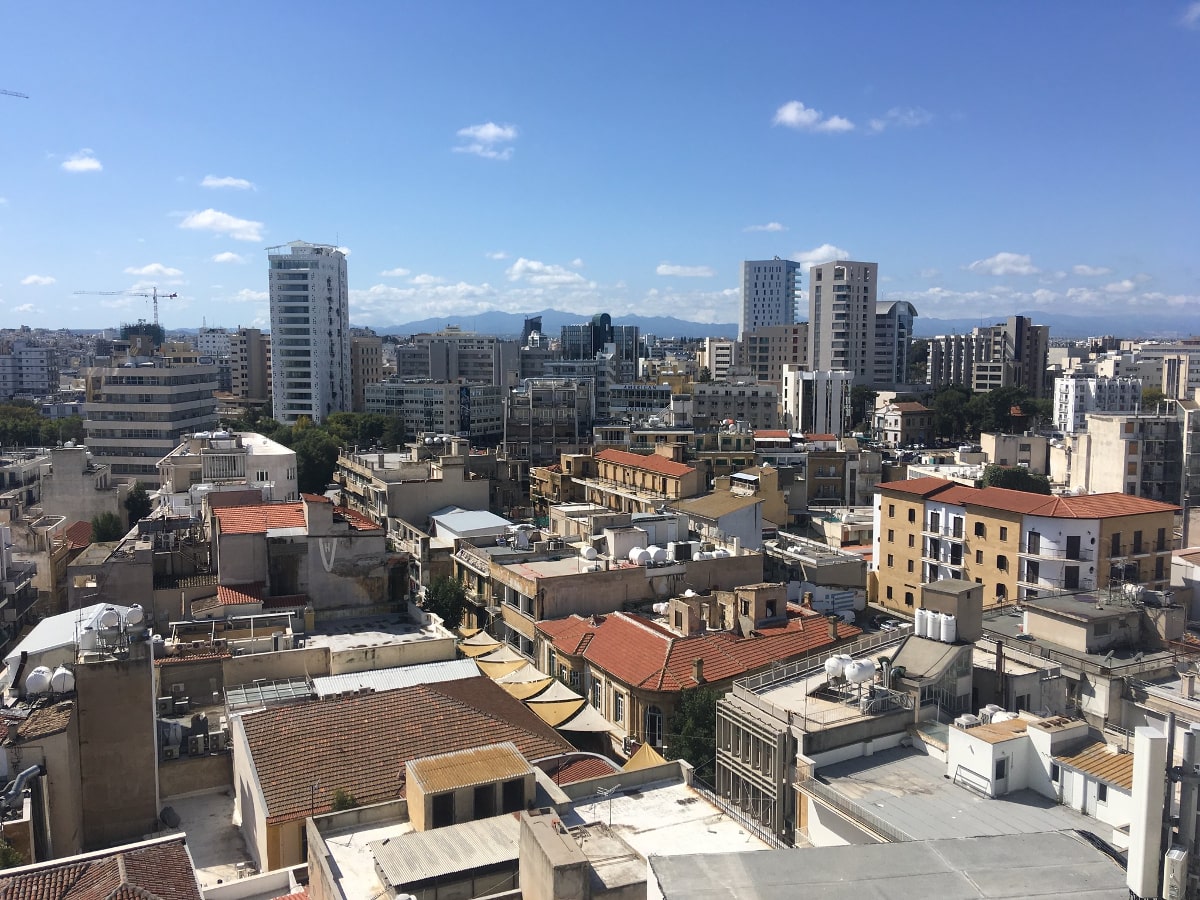While Cyprus has long been a popular holiday destination for hordes of Northern Europeans, it is still relatively undiscovered by many visitors to Europe. Adventure seeking Brits, Scandinavians and Germans are perhaps under the impression that there isn’t much more to the island other than the odd raucous beach resort. However that couldn’t be further from the truth and many people continue to have an incredibly misguided view of what Cyprus is like, what it has to offer and even where it is. So perhaps we should start by dispelling a few myths about visiting Cyprus and the country itself!
Visiting Cyprus on a budget – The Basics
Cyprus is a Country!

Unlike other Mediterranean islands such as Crete, Corfu and Santorini which are part of Greece and very popular with travellers, Cyprus is an independent nation. Although heavily Greek influenced, it has its own identity and customs that are uniquely Cypriot. It is also a full member of the European Union which makes travelling there easy for EU citizens, although it’s worth noting that as of October 2021, it is still not part of the border-free Schengen Area.
Where is it?
Most people’s geographical knowledge of Cyprus doesn’t stretch much past the fact that it is somewhere in the Mediterranean Sea, probably close to Greece. When you tell them that it is in fact just 100 km off the coast of war-torn Syria and closer to Israel, Lebanon and Iraq than the almost 1000 km trip to Athens, you might be greeted with the odd disbelieving look but it’s true. Look at a map!
The Cyprus Problem
This is where things get a bit confusing and there are plenty of books, movies and documentaries dedicated to it and many conflicting views so it would be impossible to go into too much detail here. The basic facts are that the island is shared between Greek Cypriots and Turkish Cypriots. In 1974 hostilities broke out between the two sides (with a fair amount of encouragement from the Greek and Turkish governments) resulting in Turkish troops arriving and taking control of the predominantly ethnically Turkish north of the island.
The United Nations intervened and put in force a de-militarised buffer zone between the two sides and nearly 50 years later it is still there and UN peacekeepers continue to operate it. Tensions are nowhere near as high as they are at the DMZ in Korea for example but things do occasionally boil over. There are a few official crossing points between the North and the South so travelling between the two sides is very possible for visitors.
While many people in the northern part and in Turkey regard Northern Cyprus to be an independent state, this isn’t a view shared by the majority of the international community which still sees Cyprus as one entity, albeit a divided one.
The most striking remnants of the war and subsequent division can be found at the border town of Varosha, which was abandoned in 1974 after the Turkish invasion. It has been abandoned ever since as it happened to fall inside the UN initiated buffer zone. If you visit the town of Famagusta, you can see its crumbling hotels very clearly although armed guards will prevent you or anyone from entering it. It makes our piece on the top 10 ghost towns and peering into what is effectively the 1970’s is a weirdly eerie but fascinating experience.
What is there to see and do in Cyprus?
Cypriot Beaches

Lets start with the obvious one. Cyprus has some gorgeous beaches!
As Europe’s Southernmost country, it also has a fantastic climate with long sunny days and warm weather year-round. From March to November most days are warm enough for lazing on the beach and this alone sets it apart from pretty much everywhere else on the continent besides Spain’s Canary Islands which are also located a long way South of mainland Europe. The winter is mild and still generally pleasant although the summer can be uncomfortably hot.
By avoiding the busy summer holidays period (late to July till early September), you can beat the crowds, get warm but slightly more bearable weather and get much better prices. Tour operators like First Choice often have good all inclusive deals throughout the year and the island is small enough to get anywhere in a day so it’s sensible to find yourself a base and explore Cyprus at your own pace.
If you want to escape the crowds, there are still many beautiful unspoiled beaches to be found especially in the north of the island which receives much less in the way of tourism but is equally enchanting.
Nicosia

With under a million people living in Cyprus, there are no major cities but Nicosia is home to a third of the island’s inhabitants and is the political and commercial centre and also lies on the frontier between the northern and southern parts of the island.
A visit here is a must and you can easily explore both sides of the city on the same day. In the Turkish half grab a bargain at the bustling bazaar or visit the traditional baths. Hopping back over into Southern Nicosia you can find great parks, squares and a few museums which document the troubled recent history of Cyprus in more detail.
Explore the Cypriot Countryside
If you want to experience the real Cyprus away from the hustle and bustle of Nicosia and the touristy coastal towns you have to venture into the countryside where it is surprisingly easy to get a feel for the laid back Cypriot way of life. The Troodos Mountains in the west of the island are incredibly beautiful and a nice place to escape the summer heat. If you’re with friends then renting a car out for a day or more can prove fairly inexpensive and you can visit sleepy villages, discover peaceful monasteries and take in some of the numerous UNESCO world heritage sites.
History
As well as the interesting recent history, life in Cyprus dates back millennia from the New Stone Age all the way to the Roman Empire. Ownership of Cyprus changed hands many times before the country finally declared independence from Britain in 1960. The British influence means English is very widely spoken so it’s easy to find information and organise trips or do it yourself in a rental car. There are important historical sites in and around Nicosia and in the Troodos Mountains but also in the east and north of the island.
Sample the Local Cuisine
Cypriot food is very tasty and many dishes are unique to the island and while Greek food is widely served, it is generally with a special local twist. Some of the better offerings include Cypriot meze which is often an enormous serving of various different meat and fish dishes. Other specialties include halloumi and tahini while local wines are also normally very good although often on the strong side!
Nightlife
If you need to let your hair down, then Ayia Napa is the undisputed party capital with a lively bar district that parties till dawn on a daily basis in the peak season. Truth be told you can find decent nightlife in most of the bigger coastal towns during the summer months and although there are perhaps classier places to party, most are unashamedly good fun.
This article was first published in December 2014 and updated in October 2021.

